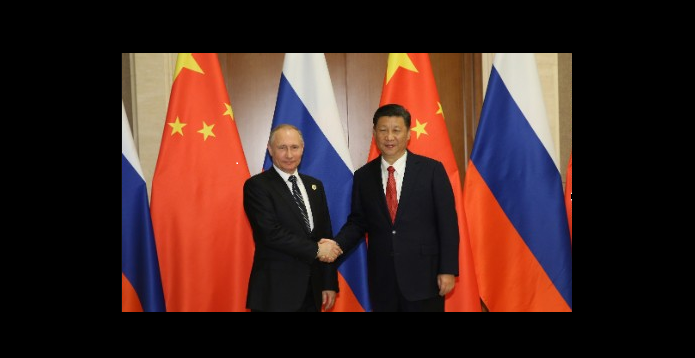India Sulks as OBOR Takes Off: The Options Now
ANURADHA CHENOY

NEW DELHI: A Forum to discuss a Chinese led international cartel, the One Belt One Road (OBOR) projected to combine trade, investment, connectivity, and more is underway in Beijing (May 14 and 15). It is being attended by 28 heads of states, including President Putin, and many neighbours like Pakistan, Myanmar, Nepal, Bangladesh, Sri Lanka. President Trump is sending his special assistant Matt Pottinger, to attend the meeting, even while US-China relations are moving towards an detente cordial. India is giving this a purposeful miss.
India’s argument is that a critical part of the project is the China Pakistan Economic Corridor (CPEC), that passes through Pakistan Occupied Kashmir, which is regarded as Indian territory. So this CPEC part of the project “ignores its (India’s) core concerns on sovereignty and territorial integrity”. China who had invited India to be part of this huge connectivity that has arterial corridors to Europe, South East Asia, Central Asia, West Asia, and even an Africa link, has argued on the other hand that OBOR and its attendant projects including CPEC are about economics and connectivity and nothing to do with sovereignty issues. And not attending the OBOR Forum would leave India without a voice in this project.
So what are the issues behind this debate? And what are India’s options? The major issue is that the OBOR is China’s next step as a major global superpower. However, unlike past super powers, China is projecting to reach this status through an intricate economic stranglehold of the world economy. Chinese investments world over, including in the USA and EU, run into trillions of dollars. It is moving into South East Asia at an even greater pace.
Clearly many countries like India, the US, Japan, Vietnam and several others resent this - because all are aware of the mercantilist polices of China, where flag follows trade;
- because China has taken the greatest advantages of neo liberal globalisation by extending its manufacturing bases several times over and de-industrialising the traditional manufacturing centres in the West and elsewhere;
- because China is projecting itself as ‘the’ global power of the 22nd century.
In this project, China is seeking an accommodation with other countries, especially the US and Russia. For the US it is willing to have a ‘G-2’ kind of situation where both the US and China with be the Great -2. Russia and others will be accommodated in the lower hierarchy.
In these circumstances, it appears that most countries, including the US have done a cost benefit analysis, and decided to go for these initial meetings. This includes delegations from Japan, Philippines and Vietnam. The IMF director is present, in this Forum, as China says that the Forum is ‘not political’. It is early days, for the ambitious project and there could be benefits and costs.
India’s worries, are about CPEC passing through sensitive areas;
-questioning Indian rights in POK;
-China’s aggressive moves into its neighbourhood of making ports across South and South East Asia and expanding its naval might;
-becoming the main balancer in South Asia;
-creating Pakistan as a major client state, whereby the Pakistani tail can also wag the dog;
-economically getting into a debt trap; and so forth.
Of course there are security risks as well for example, China investment of $57 billion in Pakistan, connects port Gwadar in the sensitive Baluchistan province of Pakistan, where 10 workers working on the project were shot on May 13. But these are risks that these China and its partners will take.
The concerns India has however are not new. These have been ongoing for generations and have been tackled in different ways by Indian diplomacy. But now Indian diplomacy seems to be charting a new course, with breaks from the past. How this will turn out, can only be speculated.
What then are India’s options vis-à-vis OBOR, China and the new China led international cartel? One option is to sulk and view Chinese moves especially on CPEC entirely through the lens of nationalism and sovereignity. Which is rich, as no one can take away India’s nationalism or sovereignity, given India’s well grounded status and position. However threats of nationalism, is a big time reason in the current ultra nationalist scenario.
The second option for India is to make its own alternative cartel, with friends and neighbours. This appears difficult as all friends and neighbours are already part of the Chinese cartel. Of course, they would not mind an Indian cartel either if India would pour billions of dollars into their countries infrastructure, open its markets even more. Then these countries could also play the balancing game between India and China.
The third option is to do some skilful diplomatic management, or tightrope walking, which is what diplomacy is about, one step forward, another backwards, till the steps are an optical illusion. This has been done earlier, but has been rejected as compromise by the current regime. Of course India has a skilful Ministry of External Affairs, they can weigh even more options. But sulking and loosing an opportunity, even before it has begun, can lead to an isolation that can cost India dear.
(Dr Anuradha Chenoy is Professor and former Dean, Jawaharlal Nehru University)



